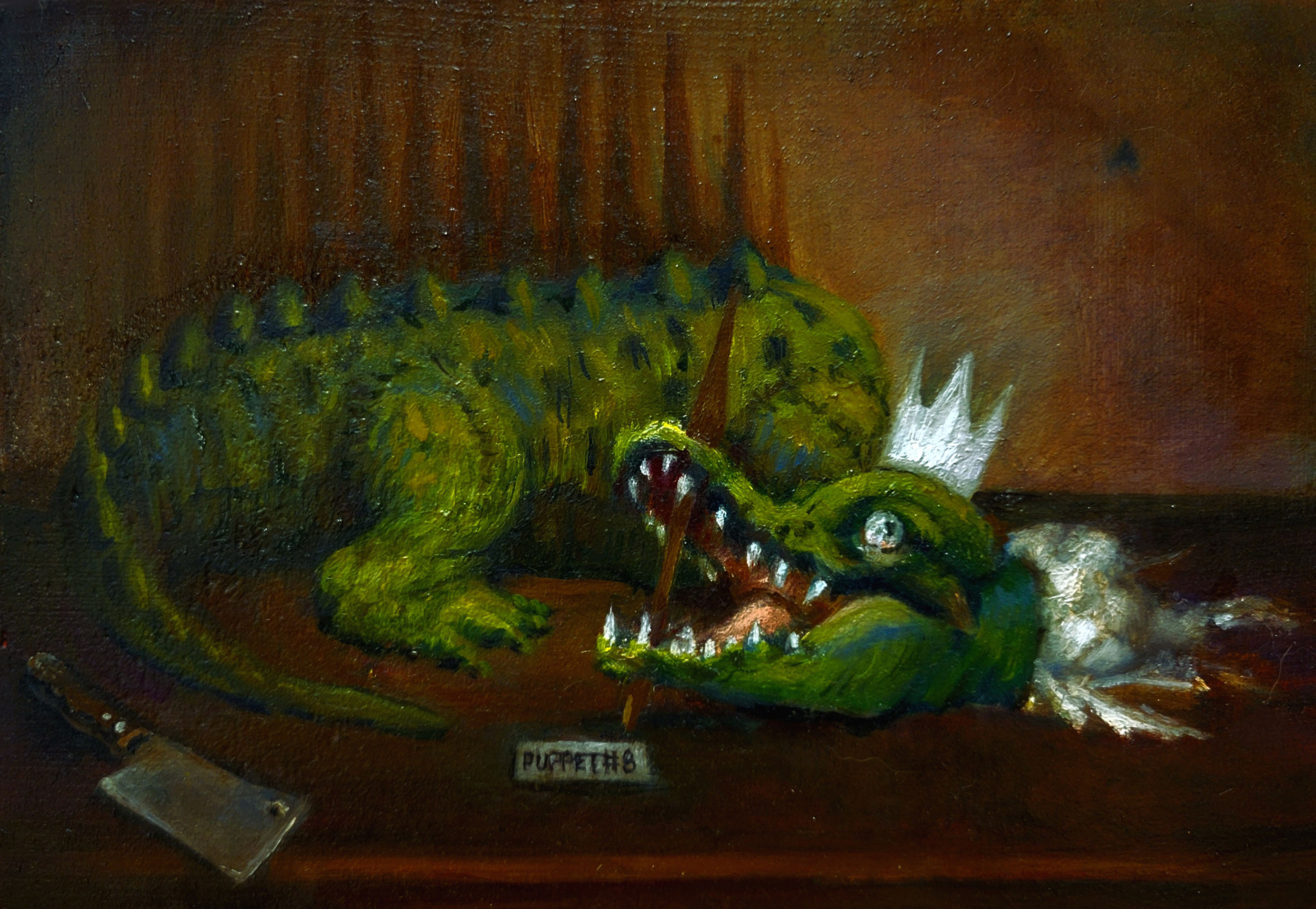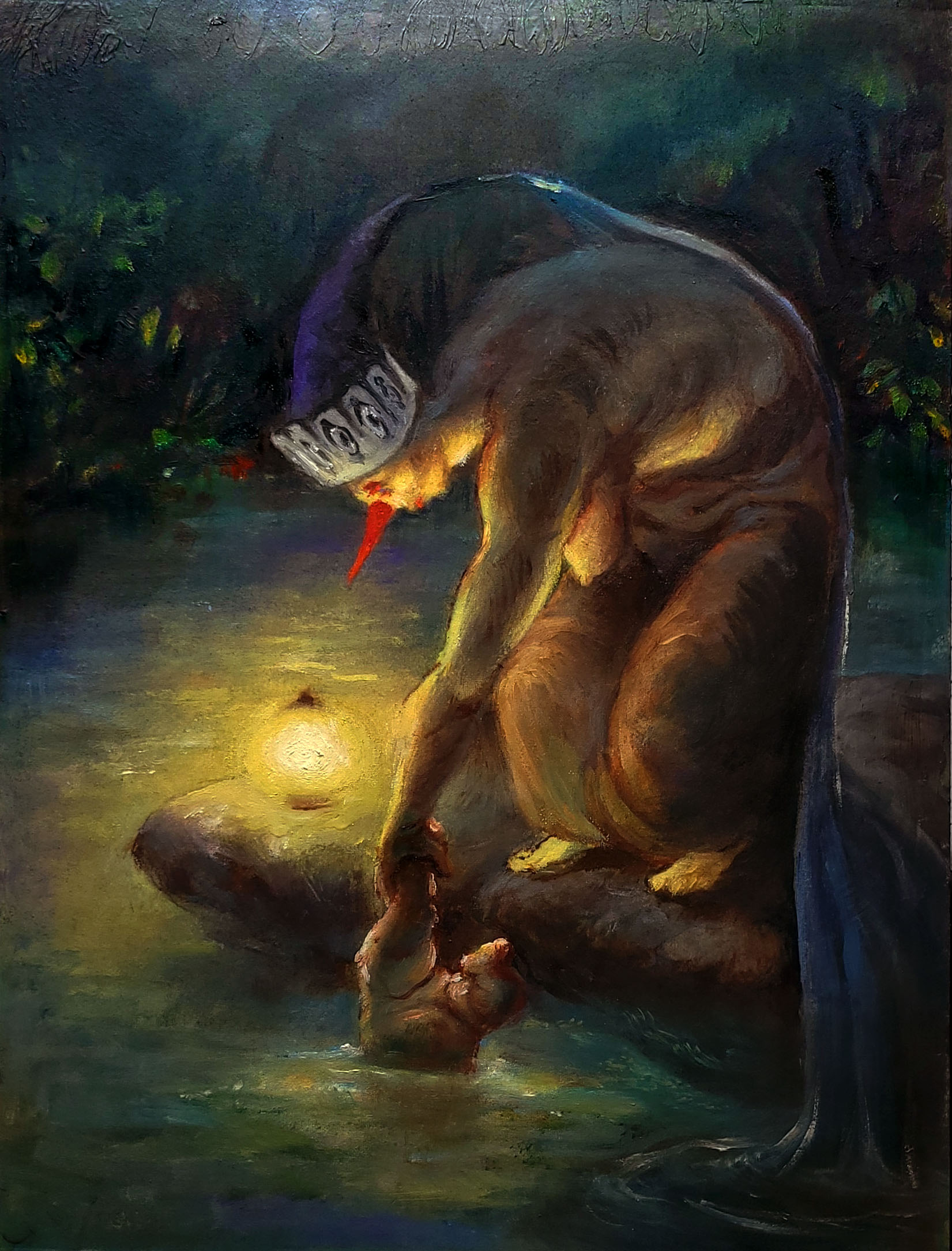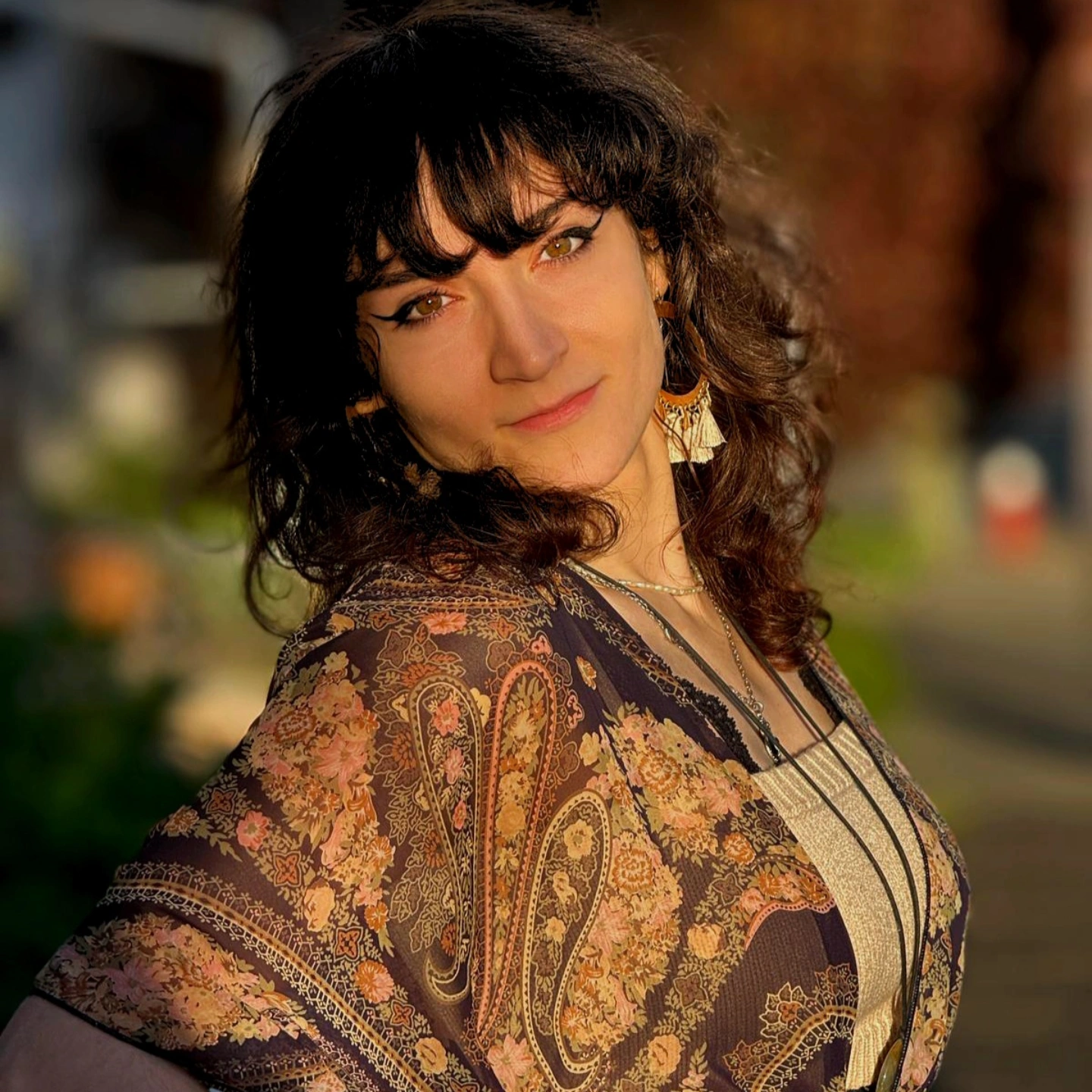We caught up with the brilliant and insightful Sarah Lorito a few weeks ago and have shared our conversation below.
Sarah, thanks for joining us, excited to have you contributing your stories and insights. I’m sure there have been days where the challenges of being an artist or creative force you to think about what it would be like to just have a regular job. When’s the last time you felt that way? Did you have any insights from the experience?
As I’ve transitioned from a student to a working artist, I’ve found myself asking this question a lot. Building a career in the arts is hard work, harder than I ever anticipated. There are so many directions you can take as a creative. Some artists work with galleries, some teach, and others run their independent businesses. Many juggle a combination of all three.
Galleries can be great because they take care of the heavy lifting: marketing, shipping, and all the logistics, so you can focus on creating work. However, that means giving a big cut of your sales and constantly putting yourself out there at shows and events, hoping the right connections stick. And no matter how skilled you are, there’s no guarantee the market will respond.
Being self-sufficient is a different kind of challenge. You handle everything yourself: marketing, taxes, shipping, outreach, the whole shebang. It’s a lot, but the people who connect with your work connect directly with you, and that’s powerful. They’re more likely to return even if they don’t purchase at every sale because they’re invested in what you do.
Then there’s teaching. It’s a way to strengthen your own skills while helping others grow, which I love. Without teachers, the practice and study of art wouldn’t survive. Teaching also keeps me grounded in the craft and pushes me creatively. It doesn’t always pay like an engineer’s salary (far from it!), but it’s meaningful work.
I’m currently a teacher and a self-sufficient artist, and my ultimate goal is to expand my creative practice and business. I want my work to be accessible and connect with a broad audience, not just a handful of collectors. That aligns perfectly with my passion for teaching; I want my students to feel the same spark I felt when I was learning, to grow into the best artists they can be.
Of course, there are times when I wonder what it would be like to have a “regular job” with stable income and a straightforward path. But whenever I imagine it, I see a version of my life where art is on the back burner, and that thought makes me miserable. I wouldn’t have the time to develop my skills the way I have now, and my art would inevitably suffer.
At the end of the day, creating art makes me happy. Sharing it makes me happy. Teaching it makes me happy. Wealth and security are nice, but I believe it’s possible to achieve a stable and comfortable life in the arts if you’re consistent and determined. That’s what I’m working toward every day.
I also think about the future a lot. Because I started so young, right out of high school, I’ve already built a strong foundation of skills. Artists used to begin training even earlier as apprentices, and while that tradition is largely lost, I know the earlier you start, the further you can go. I like to imagine where I’ll be in 20, 30, even 40 years. How much I’ll have created. The experiences I’ll have lived through.
I don’t want to look back one day and wish I’d played it safe. I’d rather take the risk, embrace the ups and downs, and build a life I can be proud of. Art is the only path that allows me to do that. Even when it’s difficult, it’s fulfilling, and that’s what matters most.


Awesome – so before we get into the rest of our questions, can you briefly introduce yourself to our readers.
I’ve been involved with art for as long as I can remember. My parents are both artists, so I grew up surrounded by creativity and a deep respect for the craft. From a young age, art was my way of organizing my thoughts, expressing my emotions, and grounding myself when life felt chaotic. As I got older, I became fascinated with the challenge of building my skills. I had all these ideas I wanted to bring to life, but my technical ability wasn’t there yet. Every time I tried, the results didn’t match the vision in my head. That frustration became a driving force. I wanted to train as much as possible so I could communicate my ideas clearly and powerfully.
I studied with New Masters Academy, where I learned the foundational skills of drawing, painting, and sculpting, and later earned my MFA from the New York Academy of Art. Both programs gave me rigorous classical training and invaluable connections, but they also opened my eyes to the realities of the art world. I realized I wanted to pursue a more independent path, one where I could build a business and creative practice on my own terms.
Today, I create oil paintings and ceramic sculptures that balance beauty, darkness, and humor. My work often explores themes of class division, performance, and the human condition through fantastical creatures and characters with morally gray complexities. I’m drawn to abject elements and layered symbolism; details that reward people who take the time to look closer. I want my paintings and sculptures to feel like portals into another world, one that’s both strange and strangely familiar.
In addition to my larger paintings, I’ve been developing a line of wheel-thrown and hand-built ceramic pieces. These include functional items like incense and candle holders, trinket dishes, altars, mugs, and plates. My goal is to create pieces that are high quality and accessible. I don’t believe affordability should mean sacrificing craftsmanship or artistic integrity. I release these products in curated shop updates throughout the year, alongside prints of my paintings, so that people at different price points can still take home a piece of my work.
I also share my process on YouTube, documenting both the joys and struggles of life as an artist. It’s important to me that my audience feels connected to the story behind the work. Art is so much more than the finished piece. It’s the hours of sketching, experimenting, failing, and trying again. I want people to feel like they’ve been invited into the world I’m building, both through the finished artwork and through the behind-the-scenes process.
What sets my work apart is the way it combines narrative depth with a sense of playfulness. I want potential clients and followers to feel like they’ve stepped into a fantastical world of creatures and symbols, but I also want them to feel welcome and invited. Whether it’s a one-of-a-kind ceramic piece, a print, or a larger oil painting, I hope people connect with the work on a personal level and take home something that sparks a sense of joy, mystery, or even self-reflection.
I’m most proud of the fact that I’ve built my practice from the ground up, balancing the often-difficult realities of being a working artist with my commitment to creating meaningful, high-quality work. Every piece I make carries a part of my story, but once it’s in the hands of a client or collector, it becomes part of their story too. That connection, the moment when someone feels truly drawn to a piece and brings it into their life, is what I value most about what I do.


Can you tell us about a time you’ve had to pivot?
For a long time, I thought my path would be animation. I’ve always been passionate about storytelling and obsessed over filmmakers like Jim Henson and Tim Burton. Animation seemed like the perfect combination of storytelling, art, and movement. But as I was honing my fine art skills, I rediscovered painting and sculpture. Studying the old masters gave me a new appreciation for storytelling through static images and marble. I realized I wanted to create worlds, develop characters, and tell stories through paintings and sculptures rather than animation.
I love the ambiguity of painting. There’s no single definitive meaning; viewers bring their own experiences and interpretations. I can layer symbolism and little “easter eggs” into my work, but everyone will see something different. That’s what makes art exciting. I want my work to invite people to slow down, really look, and discover new details the longer they engage with it.
So I made the pivot from aspiring animator to fine artist. But that shift came with some big questions: How would I sustain myself financially? Unlike animators who often find structured studio work after school, fine artists don’t have a clear roadmap. I had to decide whether to pursue galleries or build my own business.
I chose to build my own business, which meant finding ways to create work for a larger audience while staying true to my vision. I didn’t want to rely solely on six-figure paintings (not exactly a guaranteed paycheck), so I had to think more broadly. I decided to create affordable products without sacrificing that personal, handmade quality. Prints made my larger works more accessible, but I wanted to go further.
That’s when I pivoted into ceramics. Wheel throwing allows for a natural personal touch, and I loved how functional objects could also be sculptural and meaningful. I started designing small handcrafted items, sculptures, and paintings, items people could connect with and enjoy in their daily lives. At the same time, I could continue working on my larger, narrative-driven pieces.
This business also gave me a chance to weave my story into each product and engage with a wider audience. Through YouTube, I share behind-the-scenes looks at my process.
Ultimately, this pivot was crucial. I didn’t want to animate other people’s stories. I wanted to create and share my own, in my own voice, through the mediums I love most. It was a challenging decision, but one that allowed me to build a career that feels authentic and fulfilling.


Can you share a story from your journey that illustrates your resilience?
When I finished my MFA, I was determined to stay in Brooklyn. I loved the energy of the city and the space I was living in at the time. It was beautiful, inspiring, and felt like the perfect place to build my career. But as anyone who has lived in New York knows, the cost of living is steep. At the time, I was working as a teaching assistant for the Academy, and while it was fulfilling, it wasn’t enough to cover the rising rent.
Eventually, I had to make the difficult decision to leave the city and move back to New Jersey. At first, I was devastated. I worried I would lose the connections I had worked so hard to build. I wouldn’t be able to casually meet up with peers for coffee or bounce ideas off each other as easily. On top of that, the space I was moving into was much smaller than my Brooklyn apartment. I had dreamed of getting a separate studio, but that wasn’t realistic anymore. Suddenly, my living space had to double as my studio, and I had to drastically downsize.
It felt like a setback at the time, but I was determined not to let it derail my practice. I set up a small but functional art space at home, carefully organizing it so I could work as efficiently as possible. I found a teaching job nearby that could support me while still leaving time and energy for my own work. Over time, I realized that having fewer resources and a smaller space wasn’t the end of the world. In fact, it forced me to be more intentional with my time and materials.
This experience taught me a valuable lesson: even with limited space, time, and resources, you can still create meaningful work and grow your career. It’s easy to think you need the “perfect” setup before you can start, but the truth is you can build something from wherever you are. The key is to adapt, stay consistent, and keep moving forward.
Now I believe even more strongly that as you grow, your space and opportunities will grow with you. That move was a challenge, but it proved to me that resilience isn’t about avoiding setbacks: it’s about finding ways to thrive in spite of them.
Contact Info:
- Website: https://www.sarahlorito.com
- Instagram: https://www.instagram.com/sarahlorito/
- Youtube: https://www.youtube.com/@sarahlorito




